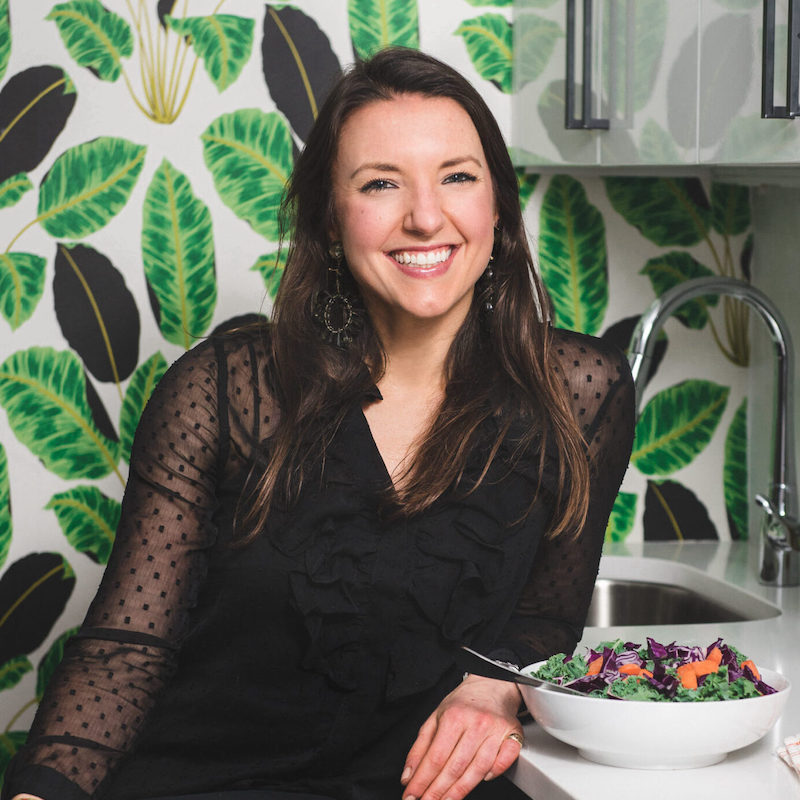June 21st, 2021
What to eat on a low-FODMAP diet

What to eat on a low-FODMAP diet
If you’ve been struggling with IBS or any long-lasting digestive symptoms, there’s a good chance you’ve heard or read about the low-FODMAP diet along the way! If you’re just beginning to look into the full low-FODMAP diet, you may feel incredibly overwhelmed (which is totally normal!) since there’s A LOT of information and guidelines. You’ll typically find tons of information on what you need to avoid during this process, so today we’re actually diving into foods TO eat on a low-FODMAP diet!
What are FODMAP foods?
So, you’ve heard all about the low-FODMAP diet, but have no clue what FODMAP foods are? Let’s dive in! FODMAPS are foods that contain specific short chain fermentable carbohydrates found in many fruits and vegetables, sweeteners, legumes, grains and other foods. For certain individuals, these foods can cause or contribute to issues like bloating, gas, diarrhea, constipation and other unfriendly GI symptoms. FODMAPs include foods containing fermentable oligo-saccharides, di and monosaccharides and polyols. Things like lactose, fructose (when in greater amounts than glucose), mannitol, sorbitol, and others. The FODMAP diet is based on following a plan that is composed of mostly low FODMAP foods, but can include some of the higher FODMAP foods if they don’t contribute to your individual symptoms.
What foods are low-FODMAP?
We’ll be the first to admit that the low-FODMAP diet can feel super restrictive, which is why it is NOT a long term solution. There’s so much emphasis on what not to eat, so let’s chat about what you CAN actually eat while limiting or eliminating some of these foods from your diet.
Low-FODMAP proteins:
- Eggs
- Firm tofu
- Meats
- Poultry
- Seafood
- Tempeh
Low-FODMAP fats:
- Nuts – macadamias, peanuts, pecans, walnuts
- Seeds – pumpkin seeds, sunflower seeds, sesame
- Oils – we recommend sticking with olive oil and coconut oil (a small portion of avocado is likely okay)
Low-FODMAP veggies:
- Eggplant
- Green beans
- Bok-choy
- Bell peppers
- Carrots
- Cucumbers
- Lettuce
- Potatoes
- Tomatoes
- Zucchini
Low-FODMAP fruits:
- Cantaloupe
- Grapes
- Kiwi
- Oranges
- Pineapple
- Strawberries
Low-FODMAP grains:
- Gluten-free grains and products (think: rice, quinoa, oats, buckwheat, amaranth, millet)
Low-FODMAP dairy:
- Almond milk, soy milk, oat milk
- Coconut yogurt
- Brie
- Feta and hard cheeses
Sample 2-day menu of eating low FODMAP meals
Day 1:
- Breakfast – Gluten-free oatmeal with strawberries, peanut butter, and drizzle of maple syrup
- Lunch – Buddha bowl filled with quinoa, tofu, lettuce, peppers and bok choy with olive oil dressing
- Snack – Baby carrots
- Dinner – Grilled chicken with sweet potatoes and zucchini
Day 2:
- Breakfast – Scrambled eggs with sauteed kale and tomatoes + side of low-fodmap fruits
- Lunch – Turkey burger in lettuce wrap (or GF bun) with a side salad
- Snack – Coconut yogurt topped with pumpkin seeds and strawberries
- Dinner – Roasted salmon with green beans and brown rice
Bottom Line
Tackling a low-FODMAP diet can be tough! We often find that we actually don’t need to implement a full low-FODMAP diet with clients, but can identify the few foods/groups that are strong triggers for an individual. The goal is to reduce some of the inflammation happening in the gut, strengthen the gut lining, and begin to reintroduce foods along the way!
Struggling with the low-FODMAP diet or still not feeling any relief? Click here to work with me!



